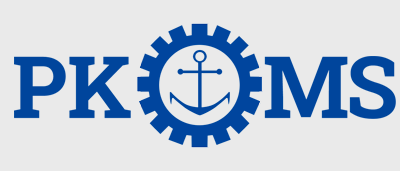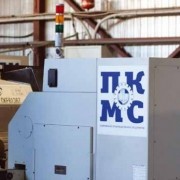PK MS: just keep working
The growing demand for new ships in Russia rises the need for high-quality components and materials. Over 180 of Russian shipbuilding companies, as well as 2,000 subcontractors, are solving the problem of developing their own production of a wide range of products, which in the future will allow Russia to pursue an independent policy to ensure the country’s technological security. One of the players on the Russian market of marine equipment is the PK MS company from St. Petersburg, which successfully supplies its own products to the majority of ships under construction in the country.
Since 2012, PK MS has been successfully combining commercial activities and the production of high-quality marine equipment. From the first day of its foundation, the company has been engaged in metalworking, the manufacture of metal parts and components for shipbuilding, as well as the production and supply of mechanisms that ship repair industry needs. The main activity of PK MS is the production of products for shipbuilding. However, at the facilities of the enterprise, orders for railway transport are also carried out. For example, studs for fastening the motors of rail cars, as well as other parts and mechanisms for rolling stock and electric trains.
The reputation of a conscientious supplier has been earned by PK MS not so much by volumes of production as by the approach to work. The company’s product range includes more than 1000 items, and most of them are unique. So, today in the domestic market of ship equipment, except for the PK MS, no one produces ventilation heads, waste water discharge parts and tons of other equipment. Also, the St. Petersburg enterprise serially produces deck scuppers, actuator parts of the 573rd group, heads (mushroom, exhaust, air pipe), water/gas tight covers, electrical cable glands and other marine products. All products of PK MS are tested at a stand certified by the Russian River Register (RRR) and the Russian Maritime Register of Ship building (RMRS).
Increasing labor productivity, volumes and quality of products is one of the strategic goals of PK MS. The company systematically renews its main production assortment. Moving to a new production site allowed us to expand our own staff and purchase new modern equipment for metalwork.
Now the enterprise has a separate section equipped with CNC machines: four lathes, two milling machines, lathes with the robotized operation, even a lathe with a milling add-on. This section produces ship fittings and cargo securing mechanisms. Today the company supplies its own products to several dozens of ships under construction in the country. These are dry cargo ships, as well as non-self-propelled barges. Some of the products are in demand for military orders. For example, we produce vent covers of lightweight alloys according to the technical specifications of several design bureaus. They will be installed on the military boats of the Caspian Fleet.
In recent years PK MS has participated in the construction of the largest series of motor ships. First, the company manufactured and supplied a ventilation and air conditioning system for the entire series of dry cargo vessels of RSD59 project, which are being built at the Krasnoye Sormovo shipyard. Secondly, PK MS has supplied the same systems for a series of modern non-self-propelled oil carrier barges of the ROB20 project, which are being built at the Oka shipyard. Please note that for all these ships PK MS produced non-standard products: orders for them were formed by shipyards following their individual requirements.
The development and approval of drawings, as well as testing of prototypes, was carried out at our site by the design department of PK MS together with the representatives of the design bureaus.
Founded in 2012, PK MS is a manufacturer of complete metal products, mostly marine equipment. The company is a certified manufacturer by the Russian River Register and the Russian Maritime Register of Ship building.




